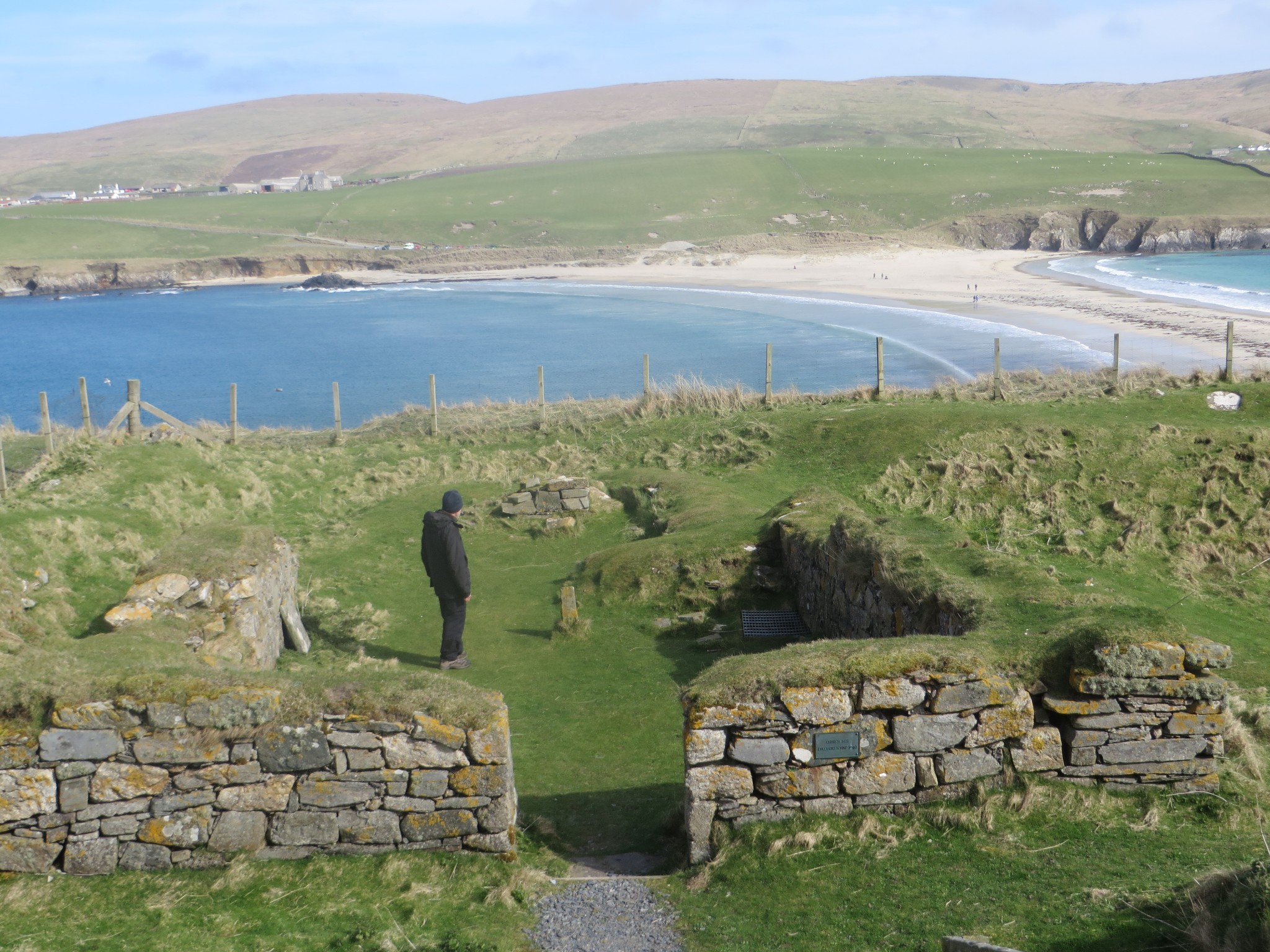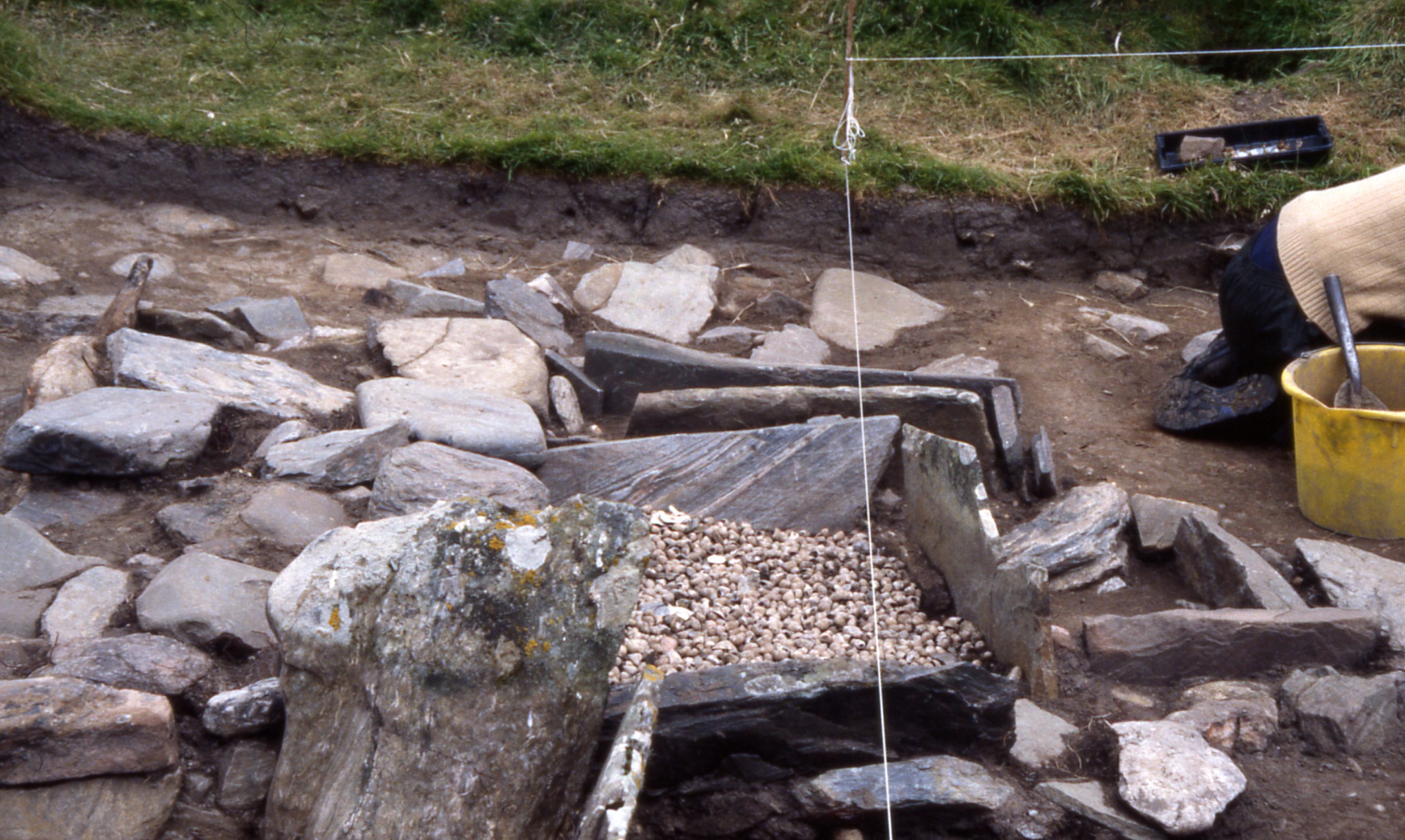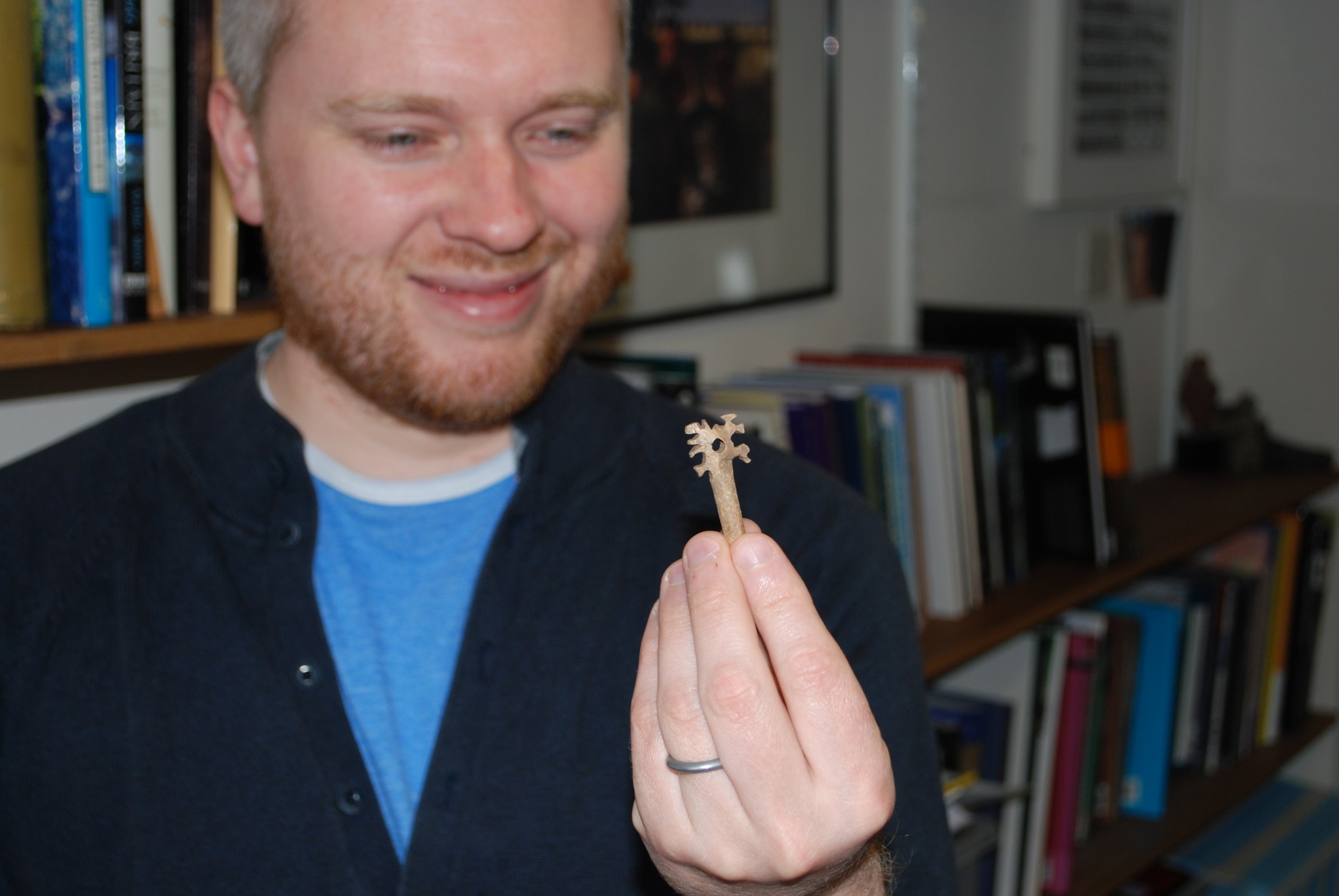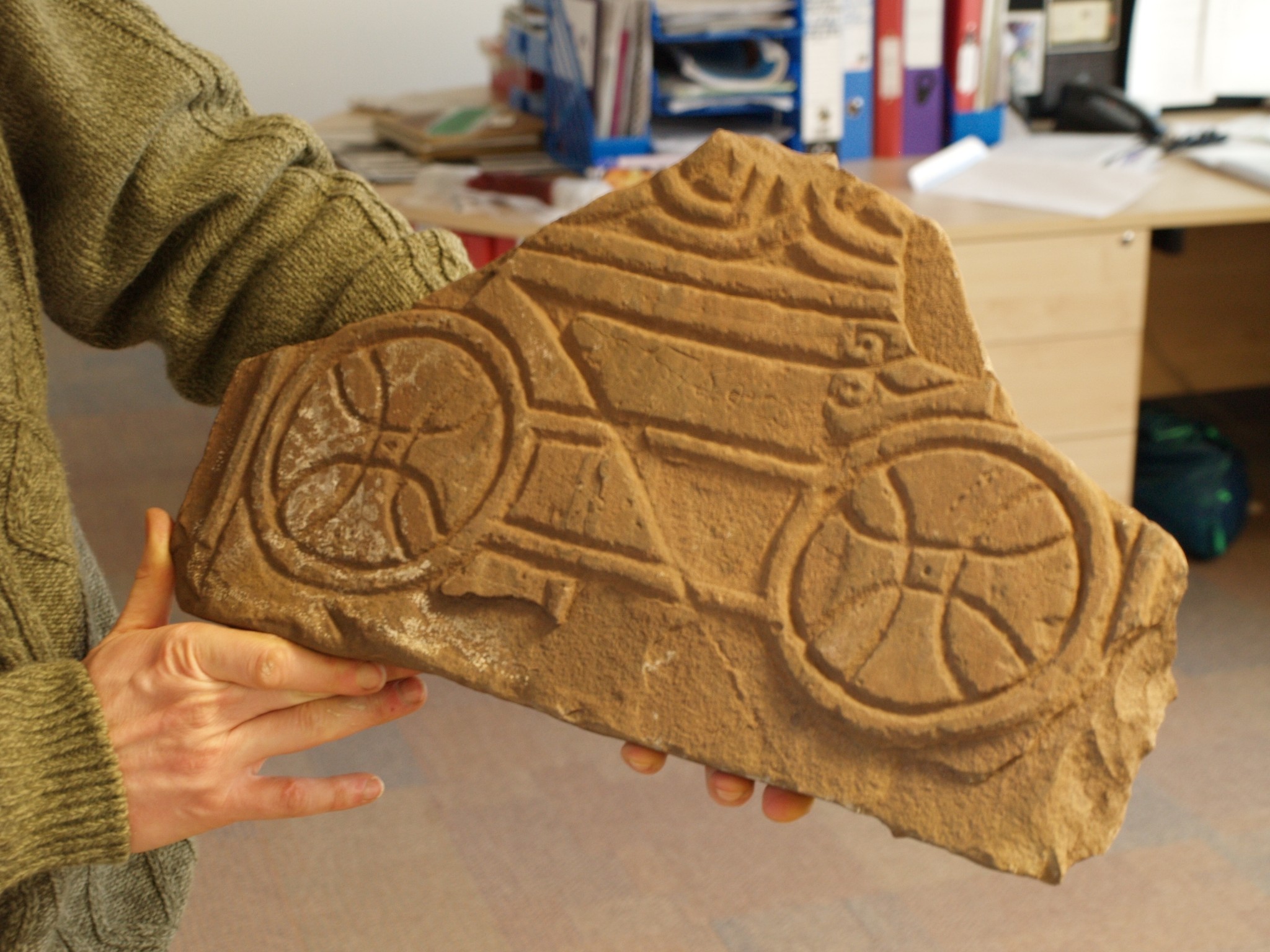Off the Beaten Track 5 - The Mysterious Picts
Published: 30 April 2020
Shetland’s Pictish era is shrouded in mystery. So far we’ve found only a fraction of those which must survive, if only we knew where to look. Today I’m covering some sites which, in one sense don’t qualify as being off the beaten track, but nevertheless are often overlooked.
Who were the Picts?
The Late Iron Age people are known today as the Picts. Essentially they were the descendants of broch builders, but lived in smaller houses than their predecessors. These include wheelhouses and cellular buildings like those discovered at Old Scatness and Jarlshof.
The Picts were first mentioned in late Roman writings as a collection of troublesome tribes living just north of the Roman frontier. In time Scotland was divided into multiple “Pictish” kingdoms, perhaps including Orkney. Gradually the political organisation of Scotland changed. By the time we have more documentary evidence, a large Pictish kingdom called Fortriu was ruled from Inverness/Moray. It dominated northern and eastern Scotland until Viking times.
The Picts vanish from the written records in the 9th century AD. An anonymous 12th century Norwegian writer described them as “pygmies” who “worked marvels in the morning and the evening, building towns, but at midday they lost their strength entirely and lurked through fear in little underground houses”. (Like trows?)
One clue to their whereabouts is the slowly increasing discovery of Pictish art. The Picts carved strange and distinctive symbols in silver and stone, and probably in less durable materials too. Their meanings are unknown, but perhaps they indicated clans. In addition solitary figures such as the Mail figure, or animals including the Scatness bear, sometimes turn up unexpectedly.
When the Picts brought Christianity into Shetland, they began to use religious symbols. Until very recently, archaeologists were reliant on these carvings to recognise any Picts in Shetland.
St Ninian’s Isle (HU 368,208)

 The story of the discovery of 28 elaborately moulded Pictish silver objects buried in a larch wood box (along with the jawbone of a porpoise) and the ensuing court case which changed Scottish law, are well known. The designs on the silver suggested that it was made in several places including Ireland and the South of England. Since it appears to be a personal collection rather than ecclesiastical, it implies that some Shetland Picts were extremely wealthy. Chapels were considered safe places in troubled times, and it is easy to imagine that the treasure was buried when a Viking ship was approaching. The treasure was never retrieved suggesting that, whatever the danger was, it overtook the owners who never returned.
The story of the discovery of 28 elaborately moulded Pictish silver objects buried in a larch wood box (along with the jawbone of a porpoise) and the ensuing court case which changed Scottish law, are well known. The designs on the silver suggested that it was made in several places including Ireland and the South of England. Since it appears to be a personal collection rather than ecclesiastical, it implies that some Shetland Picts were extremely wealthy. Chapels were considered safe places in troubled times, and it is easy to imagine that the treasure was buried when a Viking ship was approaching. The treasure was never retrieved suggesting that, whatever the danger was, it overtook the owners who never returned.
Papil, Burra (HU 3698,3141)
Pictish Papil was probably the heart of a thriving community and was probably important to Pictish Shetland. Today a ruined chapel stands on a low mound, probably the site of the Pictish church. All that remains of the original circular graveyard is a length of curved bank. There is a replica of a Pictish cross slab just inside the graveyard, commissioned by the Shetland Council of Churches Trust to celebrate the millennium. When the original was found in 1877, by Gilbert Goudie, it was being in use as a grave marker for a minister who had died 100 years earlier.
The early 9th century slab shows a cross at the top with monks either side. Below this there is a lion and strangely, and far less well carved, are what has been described as “two women dressed as birds whispering temptation into the ears of St Anthony”.
A remarkable, probably 8th century, carved slab, now in Shetland Museum, formed one side of a corner post shrine – a stone box which would have contained the body of a locally important person. The four corners were formed by stone posts with grooves carved in them and which the side slabs slotted into. It shows four monks or priests, one riding a (Shetland?) pony.
Other fragments of stone found here suggest that there were several Pictish shrines and memorials here. People living nearby could still make spectacular discoveries. One lucky person, laying a water pipe in 1951, discovered a rune stone.
Gungstie, Noss (HU 5310,4095)
Noss definitely isn’t accessible at the moment. While the majority of visitors go there for the birds, the grassy lumps and bumps in front of the warden’s house are actually the remains of a chapel from 1711. The associated burial ground was in use until 1878. As the graveyard gradually erodes into the sea, over the years pieces of cross slabs and corner posts have been recovered.
I led a small excavation in 1993, focused on three skeletons which were falling out of the banks. One of our discoveries was a small round building. At the time we thought it might be the base of a Viking round towered church. However, digging at Old Scatness shed new light on Pictish architecture, and the probability is that this was part of a Pictish cellular house, additional rooms having already been lost over the banks. Since we also found a corner post from a shrine, and a small slab with a cross scratched on it, the evidence suggests that Gungstie was once Pictish. It makes me very hopeful that more Pictish sites will be found.
Mail, Cunningsburgh (HU 4325,2790)


Now that the government have said that we can drive to places provided we walk for longer than we drove to get there, next week I’ll return to this intriguing intermixing of Picts and Vikings, and look at some longer walks in the islands of Bressay and Unst.
Regional Archaeologist, Val Turner of Shetland Amenity Trust
We hope you have enjoyed this blog.  We rely on the generous support of our funders and supporters to continue our work on behalf of Shetland. Everything we do is about caring for Shetland's outstanding natural and cultural heritage on behalf of the community and for future generations. Donations are welcomed and are essential to our work.
We rely on the generous support of our funders and supporters to continue our work on behalf of Shetland. Everything we do is about caring for Shetland's outstanding natural and cultural heritage on behalf of the community and for future generations. Donations are welcomed and are essential to our work.

